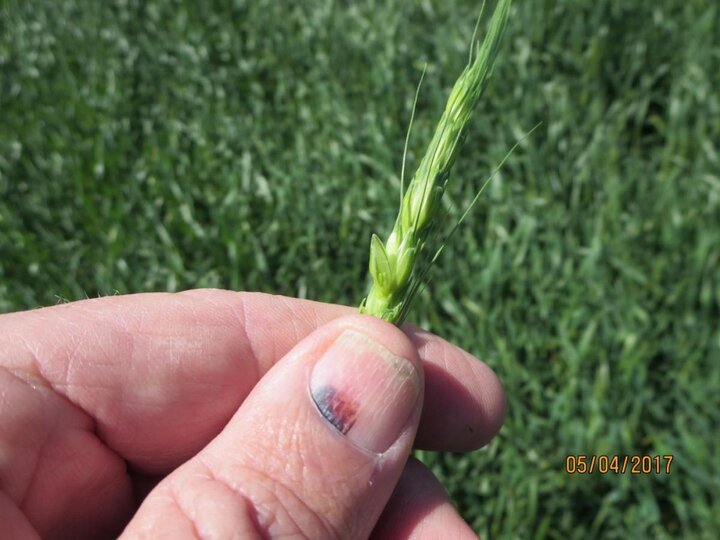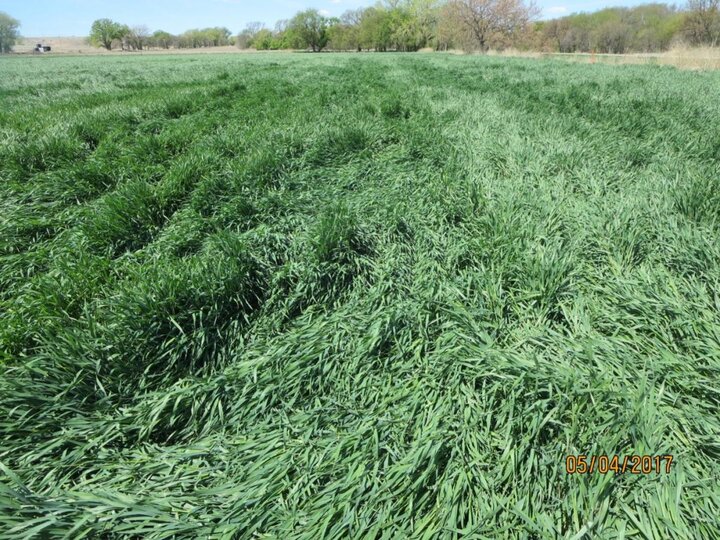Additional time is needed to properly access the injury and potential yield loss of Nebraska winter wheat, given the cold temperatures that followed last week's below freezing temperatures, heavy wet snow, and high winds. It takes at least a week to 10 days of warm temperatures to make a quality assessment.
The yield loss will depend on the growth stage and the severity of the stem damage. Wheat that has just headed is the most susceptible to below-freezing temperatures. The head is exposed and does not benefit from the field's microclimate, which can help keep the temperature higher in a good stand of winter wheat. High winds also reduce the benefits of the microclimate.




Growth stages of the wheat crop in southwest Nebraska vary from the flag leaf just starting to emerge to headed. In wheat fields that were headed but did not have stem damage, I checked the anthers (male parts of the flowers which are the more sensitive than the female parts) and they did not appear damaged. Since wheat is self -pollinated, sterility caused by freeze injury results in poor kernel set and low grain yield. Heads can emerge normally from the boots after freezing, but remain yellow or even white instead of the usual green color.
The stem damage in fields that I examined on Thursday varied from little damage to 70% stem damage. Broken or bent stems may cause some high yield losses. Past experience shows that the wheat plant often can make up for 10-25% stem damage. (We see the lowest recovery with wheat in the heading stage.) Wheat in the flag leaf and earlier stages is better able to recover from the damage. This recovery depends on later tillers which fill later. If we get hit with high temperatures — anything over 85°F reduces wheat yields — recovery will be lessened.
It will be necessary to evaluate the injury and potential yield loss of your winter wheat on a field by field basis. Wheat variety, seeding date, fertility level, growth stage, stand, terraces etc. all affect the amount of injury to freezing temperatures and stem damage.
Always consult your crop insurance provider and FSA office before making any decisions about destroying a storm-damaged field.
Resources
For further information on assessing winter wheat damage see:
- Assessing Freeze Damage to Wheat (April 27, 2017 CropWatch)
- Freeze Injury to Nebraska Wheat (Nebraska Extension EC132)

